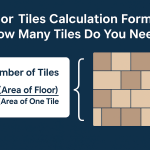Leveling is determining the relative elevations of points concerning a datum line. It deals with the measurements in a vertical plane.
Principle of Leveling
The Principle of levelling lies in furnishing a horizontal line of sight and finding the vertical distance of the points above or below the line of sight.
Principle of Levelling
Purpose of Levelling?
The following are the main objectives (purpose) of Levelling:
- To find the elevations of given points concerning a given datum.
- Establish points at given or different elevations concerning the given or assumed datum.
Important Terms Used in Levelling Survey
Level Surface
It is a surface to the mean spherical surface of the earth.
For example, The surface of still water in a lake. A level surface may be regarded as a curved surface. every point on which is equidistant from the center of the earth. It is normal for the plum line at all points. Any line lying on a level surface is called a level Surface.
Horizontal Surface
A horizontal surface through any point is a surface tangential to the level surface at that point. It is perpendicular to the plumb line. Any line lying on a horizontal surface is known as a Horizontal line and it is tangential to the level line.
Vertical Surface
A vertical surface through any point is a surface normal to the level surface at the point. Any line lying on the vertical surface is called a verticle line and is normal to the level line.
Datum
A datum is any surface to which elevations are referred. It is an Arbitrary surface or line form in which the elevation of points is measured and compared.
Elevation of a point
It is a vertical distance above or below the datum. It is also known as Reduce Level (RL). The elevation of a point is positive or negative according to the point that lies above or below the datum.
Line of Collimation
The line passing through the optical center of the objective and the point of intersection of the cross-hair stretched in front of the eyepieces and its continuation is called the line of collimation.
Bench Mark (BM)
It is a fixed reference point of the known elevation. Depending on the permanency and precision, BMs are the permanent, temporary, arbitrary benchmark.
Backsight (BS)
It is a staff reading taken on a point of a known elevation as on a benchmark or a change point. It is the first staff reading taken after the level is set up and leveled. It is also called plus sight.
Foresight (FS)
It is a staff reading taken on a point whose elevation (Reduce Level)is determined as on a change point. It is the Last staff reading taken before shifting the level to another position. It is also called Minus sight.
Intermediate sight (IS)
It is any other staff reading taken at a point of unknown elevation from the same setup of the level. All sights taken between the backsight and foresight are intermediate sights.
Change Point (CP)
It is a point denoting the shifting of the level. It is a point on which the force and back sights are taken.
station
It is a point whose elevation is to be determined. It may be noted that it is a point where the staff is held and the reading taken during the process of leveling.
Height of instruments (HI)
It is the elevation of the plane of collimation when the instrument is correctly leveled. It is equal to the reduced level of benchmark plus the backsight.
Elimination of the parallax
When the image formed by the object glass does not fall in the plane of the diaphragm there is said to be parallax. it is due to faulty focusing of the object’s glass. Parallax is eliminated in two steps:
| 1. Focussing the eyepiece for the distinct vision of cross-hair | 1. Focussing the eyepiece for the distinct vision of cross-hair |
Temporary adjustment of Level
These are performed to make the axis of rotation vertical and eliminate the parallax every time. when the instrument is shifted and set up in a new position it is done in the following three steps,
| Fixing the instrument on Stand |
| Levelling up the instrument |
| Focussing |
Reduce Level (RL)
Reduce of level may be done by the following two methods:
| Rise and Fall | Hight of Collimation |
| The difference of level between two consecutive points for each setting of the instrument | The difference in level between two consecutive points for each setting of the instrument |
Reciprocal levelling
when it is not possible to set up the level midway between two points as in the case of leveling across large water bodies the reciprocal leveling is employed to carry forward the levels on the other of the obstruction.
Almost, all the terms are used in the leveling survey and calculation data for accuracy. So you have to know all of these terms and principles of leveling












